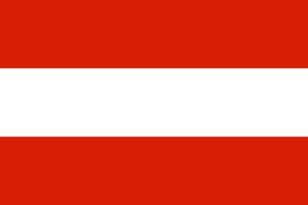Top Sustainability Metrics for Data Centers

As the demand for digital infrastructure grows, sustainability has become a top priority for data center operators. Measuring and improving environmental performance requires clear, standardized metrics that capture energy efficiency, carbon impact, resource use, and ecosystem health. Below are the key sustainability metrics every data center should track.
1. What is Power Usage Effectiveness (PUE) and why does it matter?
PUE measures total facility energy consumption divided by IT equipment energy use.
- A value close to 1.0 indicates highly efficient operations, where most energy directly powers computing rather than overhead systems like cooling or lighting.
- PUE is the most widely used benchmark for energy efficiency in data centers.
2. How does Carbon Usage Effectiveness (CUE) track carbon footprint?
CUE calculates the greenhouse gas emissions generated per unit of IT energy consumed.
- It reflects the carbon intensity of the data center’s energy sources.
- Lower CUE values indicate reduced reliance on fossil fuels and improved alignment with carbon-neutral goals.
3. What role does Cooling Efficiency Ratio (CER) play in sustainability?
CER evaluates how effectively cooling systems remove heat compared to the energy they consume.
- High CER values signal optimized cooling operations, critical since cooling can account for 30–40% of data center energy use.
4. How do data centers measure energy reuse?
The Energy Reuse Effectiveness (ERE) metric shows how well a facility recycles or exports waste energy for external use (e.g., heating nearby buildings).
- A lower ERE indicates more efficient reuse, reducing overall environmental impact.
5. What is the Renewable Energy Factor (REF) and On-site Energy Fraction (OEF)?
- REF measures the proportion of renewable energy in the total energy mix.
- OEF tracks how much energy is generated on-site (e.g., solar, wind, fuel cells). Together, they assess the sustainability of the data center’s energy sourcing strategy.
6. Why is Water Usage Effectiveness (WUE) important?
WUE quantifies the amount of water consumed per unit of IT energy.
- Water is often used for cooling, and WUE helps balance efficiency with responsible water stewardship, especially in regions with scarcity.
7. How are waste and lifecycle impacts tracked?
Waste reduction metrics monitor electronic waste, packaging, and construction materials, along with recycling and recovery rates.
- Lifecycle assessments ensure responsible end-of-life management for IT equipment and infrastructure.
8. What about the ecosystem around a data center?
Ecosystem impact metrics evaluate the effect of data centers on local biodiversity, land use, and surrounding environments.
- This includes monitoring habitat disruption, emissions affecting air quality, and sustainable landscaping practices.
9. Are there operational metrics linked to sustainability?
Yes. Operational efficiency also supports sustainability:
- Load factor optimization ensures servers run closer to capacity.
- IT utilization reduces energy waste from idle equipment.
- Cost efficiency aligns environmental initiatives with business performance.
Conclusion
By tracking these sustainability metrics—PUE, CUE, CER, ERE, REF, OEF, WUE, waste reduction, ecosystem impact, and operational efficiency—data centers can systematically benchmark progress, identify opportunities, and align with global climate goals.
Legrand’s data center solutions are designed to support this journey, helping operators reduce their environmental footprint while improving resilience and performance.
























 Canada
Canada
 Latin America (English)
Latin America (English)
 Latin America (Espanol)
Latin America (Espanol)
 USA
USA
 China
China
 India
India
 Japan
Japan
 Republic of Korea
Republic of Korea
 South East Asia (English)
South East Asia (English)
 Austria
Austria
 Belgium
Belgium
 France
France
 Germany
Germany
 Italy
Italy
 Netherlands
Netherlands
 Spain
Spain
 Switzerland
Switzerland
 Turkey
Turkey
 UK
UK
 Africa (english)
Africa (english)
 Africa (français)
Africa (français)
 Middle East (english)
Middle East (english)
 Australia
Australia
 New Zealand
New Zealand